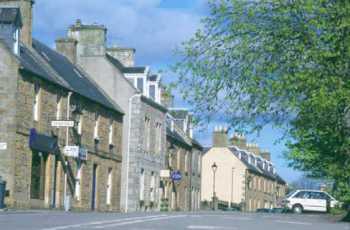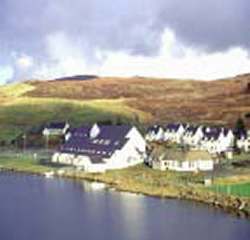 | Caithness.Org | Community | Business | Entertainment | Caithness... | Tourist Info | Site Map |
• Advertising • Chat Room • Contact Us • Kids Links • Links • Messageboard • News - Local & Scottish • News - UK & News Links • About / Contact Us • Submissions |
• Bookshop • Business Index & News • Jobs • Property For Sale • Property For Rent • Shop • Sutherland Business Index |
• Fishing • Fun Stuff • George, The Saga • Horses • Local Galas • Music • Pub Guide • Sport Index • What's On In Caithness |
• General Information • B & Bs • Backpackers • Caravan & Camping • Ferries • Getting Here • Holiday Letting • Hotels • Orkney • Pentland Firth • Sutherland • Taxis |
| N E W S F E E D S >>> |
The Sutherland
Biodiversity Action Plan - October 2003
TOWN AND VILLAGE
|
1.6 TOWN & VILLAGE Introduction The 2001 Census states that Sutherland has a total population of 13,778. Of this, 3,750 people live in settlements of over 500 people (Brora, Golspie and Dornoch), and the rest live in smaller towns, villages and crofting communities. With its small, scattered population, Sutherland does not have any extensive built-up areas. However, the variety of managed landscapes in and around its towns, villages, crofting townships and isolated houses make a major contribution to the biodiversity in their vicinity, as do the roads that connect them.
Specific habitats discussed in Section 2 Key Issues A. Lack of resources Issues: With increasing budgetary constraints, park and public garden management is becoming less well resourced, and biodiversity is not always high on the agenda of the park managers or indeed, the general public. Opportunities: Leaving some grass areas long and uncut and hedges untrimmed on roadsides will benefit biodiversity and save costs, but there may be a need for awareness raising amongst local people as to the benefits of such management.
|
B. Lack of awareness on biodiversity issues Issues: There is a general lack of awareness on biodiversity issues around villages and towns in Sutherland. Opportunities: Encourage people to learn about their local wildlife and document it. Current projects: The Highland Council Ranger Service does a lot to raise awareness of biodiversity issues in Sutherland through regular guided walks, talks, slide shows and other events. The Highland Biodiversity Project helped three
communities undertake ‘Know Your Own Patch’ projects in Skerray, Stoer and
Ardgay. The Skerray Historical Association is undertaking a survey of the
flora and fauna around Skerray. Pupils of Stoer Primary School have been
taking part in a project to
C. Fungal infections Issues: Fungal infections and loss of old trees are a threat to urban trees and parklands. Old trees and deadwood are acknowledged micro-habitats, but are often removed in an attempt to ‘tidy up’ parks and gardens. Opportunities: By raising awareness of the value of deadwood, there will be less pressure to tidy up public parks and gardens. Old and dead trees should be retained where possible, and new trees planted to replace any that have been removed. D. Road verge and hedge maintenance Opportunities: Biodiversity elements should be incorporated into roadside maintenance specifications, combined with awareness raising of the likely benefits to be had from such works. A ragwort eradication programme has been suggested.
|












